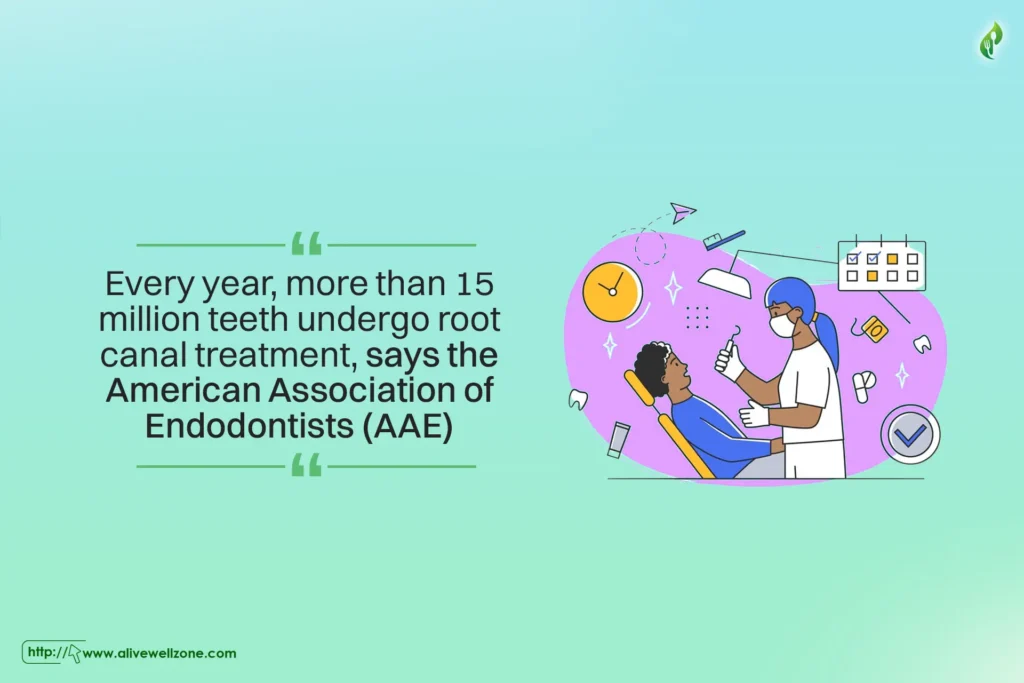Last Updated on November 22, 2024 by Helena Akter
Since you have a root canal, you can feel your mouth tender and sensitive. Right now, you can’t just bite on any food as it can disrupt the healing process. However, you need food to strengthen up, right?
No worries, we’ve got nutrition-riched 50 soft foods to eat after root canal, from breakfasts to snacks. Also, you’ll know which foods to avoid and what you should and shouldn’t do.
We’ve got you covered with everything to make your recovery as comfortable as possible.
Key Takeaways
- Post-Procedure Eating: Wait until the numbness from anesthesia wears off (about 2-3 hours) before eating to avoid accidental bites or trauma.
- Soft Food Recommendations: Choose soft, nutrient-rich foods like oatmeal, mashed potatoes, yogurt, scrambled eggs, and soups to promote healing and avoid discomfort.
- Eating Guidelines: Chew on the opposite side of the treated tooth. Plus, take small bites, eat slowly, and avoid hot foods to prevent burns and irritation.
- Foods to Avoid: Steer clear of sticky, hard, very cold, and acidic foods to protect the treated tooth and ensure a smooth recovery.
How Long After a Root Canal Can You Eat?
After a root canal, you should wait until the anesthesia wears off before eating. The numbness typically lasts for 2 to 3 hours after the procedure. Waiting for sensation to return helps prevent accidental bites or trauma to your mouth.
When you’re ready for soft meals to eat after root canal, keep these tips in mind —
- Eat slowly to avoid any discomfort.
- Chew on the opposite side of the root canal.
- Avoid hot foods or beverages to prevent burns.
50 Soft Foods to Eat After Root Canal
When it comes to food to take after root canal treatment, you must consume those that are gentle on your mouth. But at the same time, they provide the necessary nutrients for healing.
So, here’s an extensive list of 50 soft foods, categorized by meal for breakfast, lunch, and dinner.

Breakfast
These foods to eat after a root canal are gentle on your teeth and gums and help ensure a comfortable recovery.
| Foods | Description |
| Oatmeal | Soothing and warm, perfect for the morning. |
| Grits | Delicious with cheese and butter. |
| Greek Yogurt | Nutrient-rich, thick, and smooth. |
| Miso Soup | Gentle and warm on the stomach. |
| Smoothies | Blended veggies and fruits for nutrition. |
| Scrambled Eggs | A high-protein, soft food that is easy to eat. |
| Cottage Cheese | High in protein, soft, easy to consume. |
| Mashed Bananas | Sweet and soft, easy to mash and eat. |
| Semolina | Boiled to porridge, easy to digest. |
| Soft Pancakes | Fluffy and easy to chew. |
| Soft Muffins | Avoid nuts and keep it moist. |
| Soft Waffles | It’s easy to eat as it’s softened with syrup. |
Lunch
Following are the foods to eat after a root canal during lunch —
| Foods | Description |
| Mashed Potatoes | Creamy and comforting, easily digestible. |
| Chicken Soup | Tender pieces of chicken in a warm broth. |
| Avocado | Rich in healthy fats and creamy. |
| Mashed Cauliflower | Creamy and soft, perfect for replacing potatoes. |
| Steamed Asparagus | Gentle and soft on the mouth. |
| Hummus | Nutritious chickpea spread. |
| Soft Pasta | Cooked until very tender, and easy to chew. |
| Baked Beans | Protein-rich and soft. |
| Fish (e.g., Haddock, Cod, Halibut) | Flaky, soft, and gentle on the mouth. |
| Rice Pudding | Easily digestible, soft and creamy. |
| Egg Salad | Soft and easy to chew, protein-rich. |
| Lentil Soup | Smooth and hearty, easy on the mouth. |
Dinner
When it comes to supper, you’ve got a lot of soft food options —
| Foods | Description |
| Baked Salmon | Flaky and tender, full of omega-3s. |
| Risotto | A rice dish with a creamy texture. |
| Meatloaf | Easy to chew, moist, and soft. |
| Steamed Vegetables | Softened spinach, broccoli, or carrots. |
| Soft Lentil Stew | A protein-rich, easy-to-eat food. |
| Polenta | Delicious, creamy cornmeal dish. |
| Creamed Spinach | Creamy, soft, and rich in nutrients. |
| Soft Tofu | Smooth, easy-to-eat silken tofu. |
| Spaghetti | Cooked until very tender with soft sauce. |
| Steamed Zucchini | Soft and easy to chew. |
| Soft Shell Tacos | Made with soft tortillas and tender fillings. |
| Ground Chicken | Soft, easily incorporated into soups. |
| Mashed Sweet Potatoes | Creamy and nutritious. |
| Softened Bread | Soaked in broth or milk, easy to chew. |
| Soft Casseroles | Made with soft ingredients like cooked pasta or rice. |
Snacks and Desserts
We all crave some desserts and snacks. In that case, you must focus on the best food to eat after root canal treatment, such as —
| Foods | Description |
| Pudding | Creamy and easy to eat. |
| Ice Cream | Soft, soothing, and available in many flavors. |
| Macaroni and Cheese | Soft pasta with creamy cheese sauce. |
| Butternut Squash | Cooked and mashed, sweet and nutritious. |
| Jello | Soft, jiggly, and easy to consume. |
| Mousse | Light and airy, easy to swallow. |
| Cheesecake | Smooth and creamy, easy on the mouth. |
| Applesauce | Sweet and soft, easy to digest. |
| Soft Cookies | Softened in milk, easy to chew. |
| Tapioca Pudding | Soft and smooth, a gentle dessert. |
| Yogurt | Smooth and available in many flavors. |
All these foods to eat after a root canal are not only easy to chew but also nutritious.
Note: We believe it’d be helpful for you to know which soft food to eat after wisdom teeth removal.
How You Should Eat After Root Canal?
Every year, more than 15 million teeth undergo root canal treatment, says the American Association of Endodontists (AAE). So, to get a smooth recovery, you must take care of yourself after a root canal. What you eat and how you eat can significantly impact your healing process.

When choosing your first food to eat after a root canal, remember these guidelines —
- Chew on the opposite side of your mouth to avoid putting pressure on the treated tooth.
- Take small bites to minimize discomfort.
- Eat slowly and mindfully to avoid any accidental trauma.
- Avoid hot foods and drinks to prevent burns and irritation.
- Gently rinse your mouth with warm salt water after eating to keep the area clean.
- Follow your endodontist’s advice on when to resume your regular brushing and flossing routine.
Foods to Avoid After Root Canal
After a root canal, certain foods can slow down your recovery and cause discomfort. So, avoiding these foods helps protect your treated tooth and promotes healing.
Here are the main types of foods to steer clear of —
- Sticky foods like gum, taffy, and candy, can pull your temporary crown out.
- Hard items such as peanut brittle, candies, and ice cubes can chip your tooth.
- Things that are too cold or too hot may irritate sensitive areas.
- Acidic foods and beverages, including citrus fruits, coffee, tomato sauce, white wine, soda, and vinegar, can further irritate your mouth.
Note: Check out what foods you need to avoid if you have cracked teeth.
Do and Don’ts After Root Canal for Optimum Recovery
After undergoing a root canal, you might feel minor side effects like swelling, pain, and bleeding. Fortunately, these symptoms typically pass pretty quickly.
To make your recovery smoother, follow these important guidelines —
Do’s
If you follow the given practices after a root canal, it’ll help in your recovery.
- You need to brush your teeth per day twice using a toothbrush that’s soft-bristled. And try to be gentle around the treated tooth to avoid irritation.
- Use a cold compress to reduce pain and swelling.
- Manage inflammation and pain by following your dentist’s prescription
- Stick to a soft diet, such as porridge, mashed potatoes, rice, scrambled eggs, fish, dairy products, and vegetable soups.
- Rinse your mouth with warm salt water to prevent infection and minimize discomfort.
- Keep regular dental appointments and call your dentist if you experience severe symptoms.
- Lastly, ensure you rest adequately, keeping your head up when you’re lying down.
Don’ts
Avoid following actions to prevent complications and ensure a smooth recovery.
- Wait until the anesthetic wears off before consuming hot items.
- Refrain from biting or chewing the treated tooth to prevent strain on the treated area.
- Stay away from chewy, hard, and spicy foods as these can irritate the treated tooth.
- Limit sugary foods to prevent infections around the treated tooth.
- Say no to alcohol and tobacco as these substances slow down your healing.
- Avoid spitting, sucking, or using a straw as these actions disrupt the healing process.
- Quickly get a crown otherwise your treated tooth remains vulnerable to further issues.
Final Words
After undergoing a root canal, you pick the right foods for a smooth recovery. We recommend selecting from our list of 50 soft foods to eat after root canal. These foods provide necessary nutrients without causing you any discomfort.
Plus, options like oatmeal, mashed potatoes, and baked salmon are gentle on your mouth and easy to consume. By following our advice and making informed food choices, you can speed up your healing process and minimize complications.
Most importantly, remember to follow your dentist’s recommendations for additional guidance.
FAQs
How long after a root canal can you eat solid food?
You can eat solid food 30 to 45 minutes after a root canal, allowing time for your temporary filling to harden. However, it’s best to wait until the anesthetic wears off to avoid biting your cheek or tongue.
Do I brush my teeth after a root canal?
You should brush your teeth regularly after a root canal. In fact, gentle brushing improves your healing and removes aches by minimizing inflammation. Plus, when you brush your gums properly, blood circulation increases.
Can I eat ice cream after a root canal?
Yes, you can eat ice cream after a root canal. However, limit your intake due to its high sugar content, which can increase the risk of infections around the treated area.
What is the recovery time for a root canal?
Generally, it takes one to two weeks to fully recover from a root canal. During this period, follow your dentist’s aftercare instructions and avoid activities that could strain the treated tooth.
What’s the best thing to eat after a root canal?
The best thing to eat after a root canal includes soft foods like fruit smoothies, yogurt, and soft cereal. Besides satisfying hunger, these options also soothe the area around the tooth.

